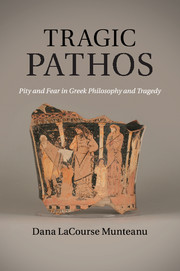Introduction
Published online by Cambridge University Press: 05 December 2011
Summary
Premise and purpose
The activity of art is based on the fact that a man receiving through his sense of hearing and sight another man's expression of feeling is capable of experiencing the emotion which moved the man who expressed it. To take the simplest example: one man laughs and another, who hears, becomes merry; or one man weeps and another, who hears, feels sorrow.
(Leo Tolstoy, What is Art?, translated by Louise and Aylmer Maude, London, 1930, 171)Certain assumptions about art can be found across cultures. The idea that works of art transmit emotions to the audience is formulated, for example, in Plato's Ion and resurfaces in Tolstoy's What is Art?. Yet, what lies behind such a general assumption of an “emotional chain” that links poet, bard, and audience? There is, in fact, not much agreement. Indeed, theorists continue to grapple with understanding the very formation of the emotions produced by art; so, naturally, adequately understanding the subsequent physical, psychological, and ethical effects of these emotions is all the more daunting. This book will explore some specific, culturally circumscribed approaches to the emotional responses to tragedy in fifth-century Athens. Although the subject matter is rather tightly focused, it will be of interest, I hope, to audiences from various humanistic fields, for it examines not only how the ancient Greeks thought about the emotional effects of poetry, but also assesses what may be culturally specific as well as universally relevant in our reflections on art.
Pity and fear, the emotions mentioned so frequently in Aristotle's Poetics, have stirred much spirited discussion within scholarly circles. Stephen Halliwell and Jonathan Lear, two of the most prominent Aristotelian scholars of our time, debate the significance of pity in the Poetics as follows. Halliwell notes that the emotion has the “potential to contribute to the tacit redefinition of an audience's moral identity.” Lear forcefully objects: “My response is this: that's very nice, if true. But what if it isn't? How would we ever know, especially if we are spending our philosophical time telling ourselves self-satisfied stories about the redemptive power of pity?” The controversy reflects an impasse that well characterizes the mainstream approach to the subject of tragic emotions in fifth-century Athens. Scholarly focus has often been on understanding Aristotle's aesthetic theory, and particularly the mysterious concept of catharsis in the Poetics as a reply to Plato's critique of tragic pity in the Republic. My book has a different focus, as it will not seek the “right” meaning of tragic pity. Rather, it will broadly examine various cultural views about pity and fear as responses to tragedy (and, in passing, epic) in classical Athens and reassess emotional expressions of pity and fear within different tragedies to suggest moral, social, and political implications of the responses of the audiences to various plays.
- Type
- Chapter
- Information
- Tragic PathosPity and Fear in Greek Philosophy and Tragedy, pp. 1 - 26Publisher: Cambridge University PressPrint publication year: 2011



